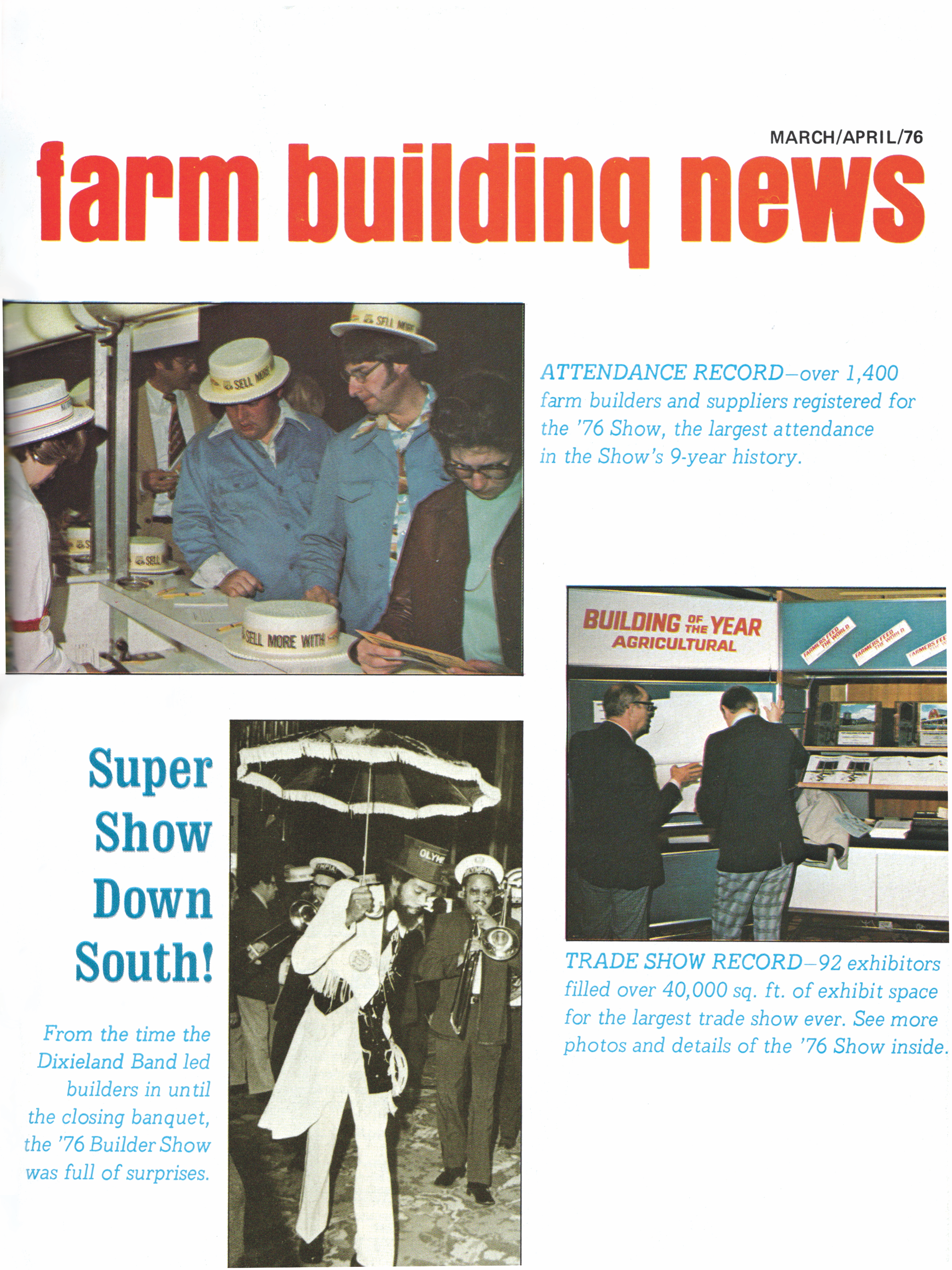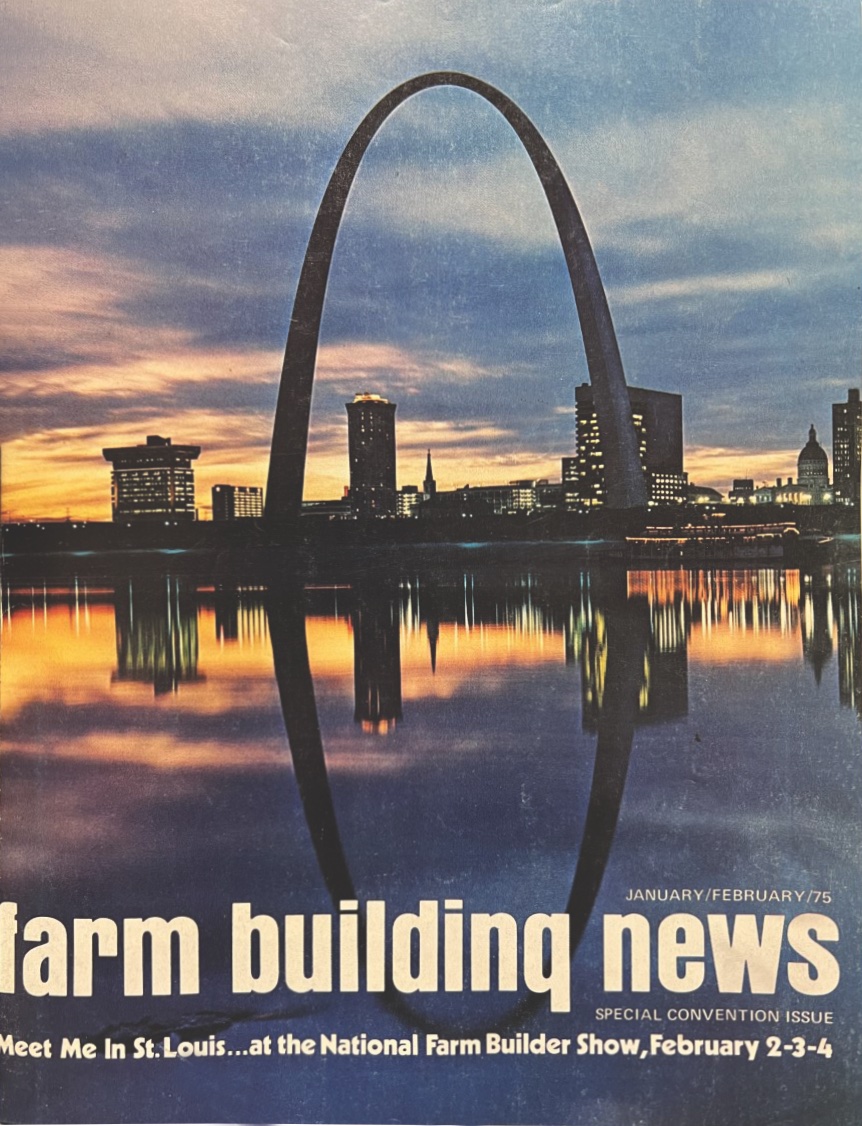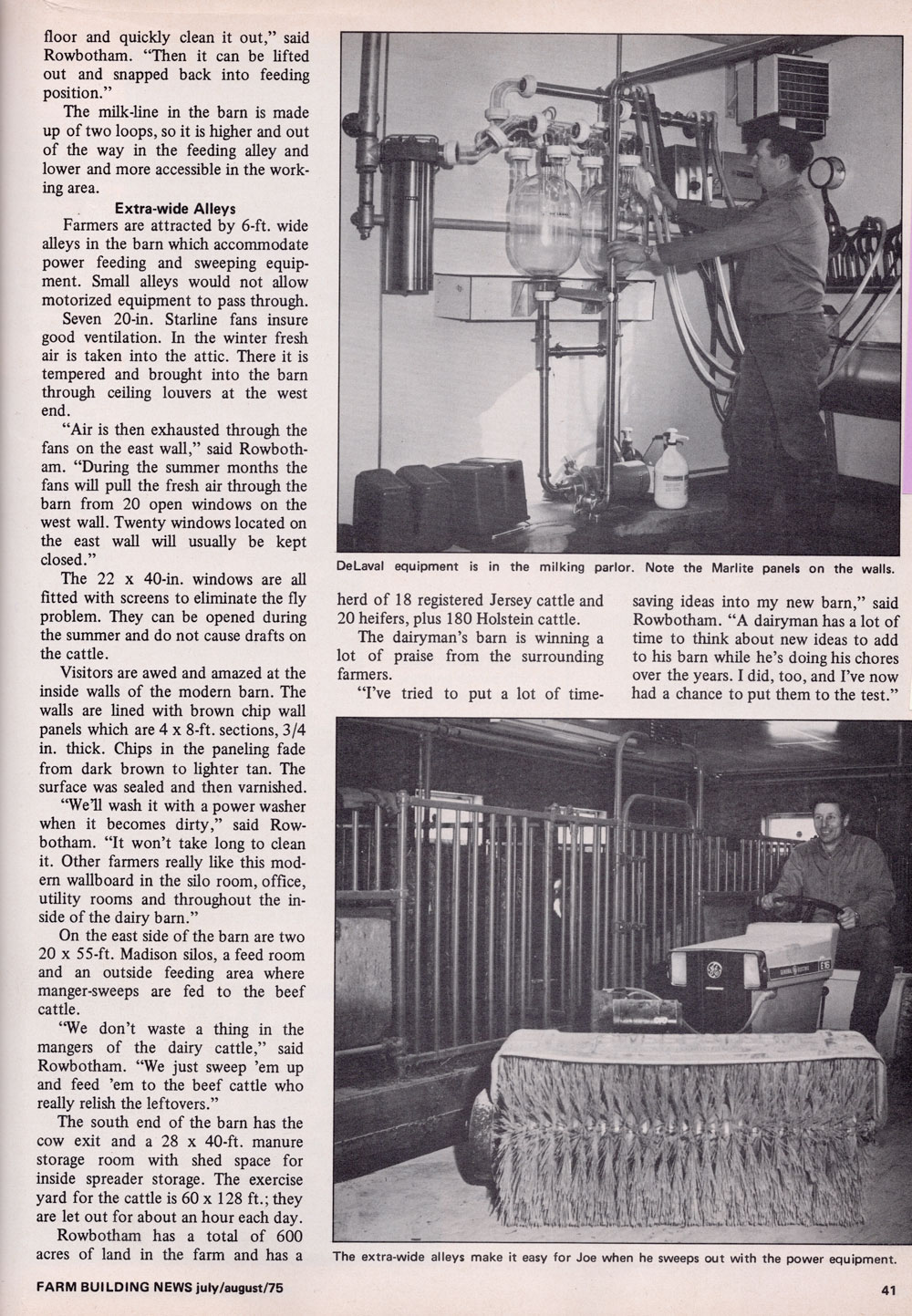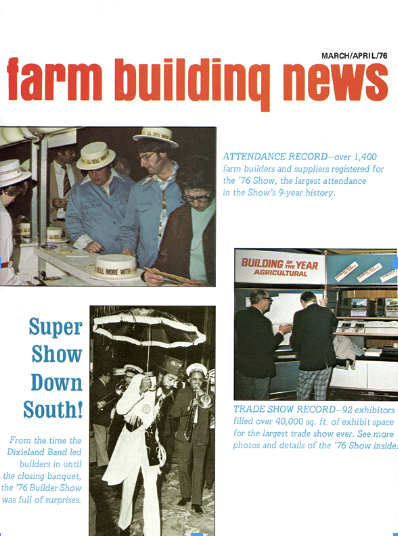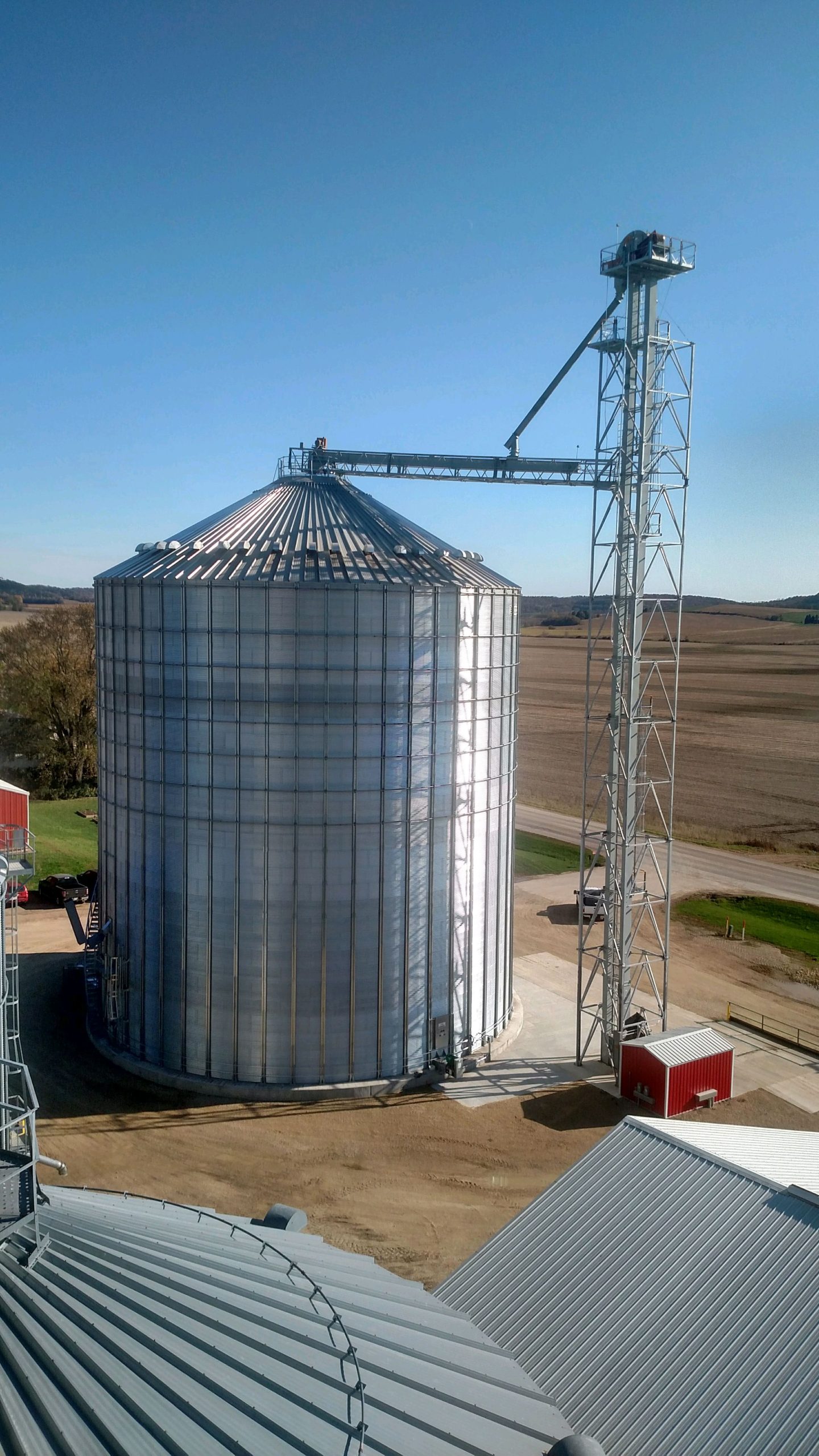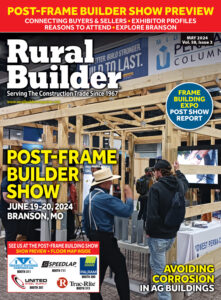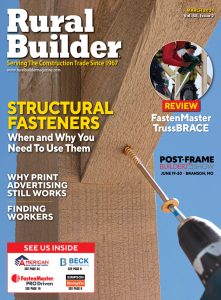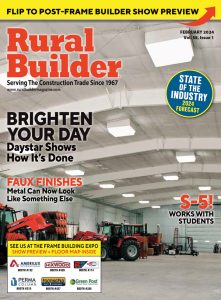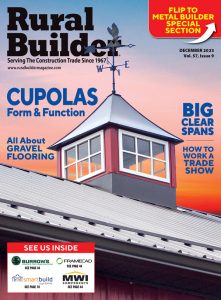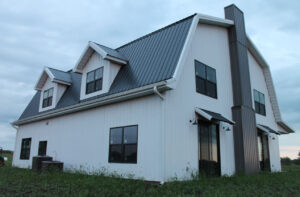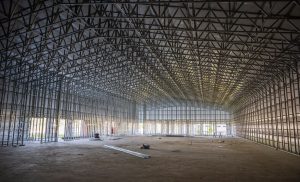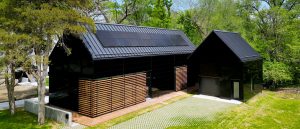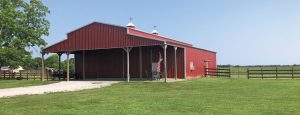Editor’s Note (1976): The above banner headline on the Jan. 1, 1968, issue of FBN proved to be quite prophetic. Farm builders at the 1976 National Farm Builder Show told us an overwhelming percentage of their buildings used color panels last year.
As part of FBN’s Bicentennial salute, we’re continuing to take a nostalgic look back at the early issues of Farm Building News, so that you farm builders can take a reflective look at the tremendous growth of your industry in the short nine years since we launched this publication in 1967.
Read the two items here and see further evidence that you’ve come a long way, builder! Watch future issues on what we were doing and thinking in the “Old Days.”
(FBN, Jan. 1968) Colored farm buildings are catching on as fast as narrow rows across rural America. While red and white were standards of the past, the average farmer — and perhaps, more specifically, the farm wife — has suddenly developed a keen interest in a wide variety of pastel hues, and has no qualms about paying the premium for the color that will not only suit his setting but be the envy of the neighborhood.
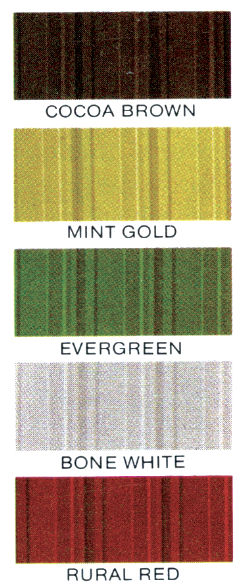
When companies began offering colors, there were few choices. Consider these choices from Granite City Steel, 1976.
To fill this demand, some farm building firms are beginning to specialize in color buildings. Morton Buildings, for example, has approached the point where they put up a plain galvanized building with some reluctance … they feel the building might detract from their image as the firm that “erects those beautiful buildings.”
The two Morton structures displayed at the Farm Progress Show in Chambers, Indiana, last September attracted a lot of traffic and a lot of sales leads.
Even farm builders who aren’t necessarily pushing color have noted an increased demand from farmers. And this new zest for color is reflected in the sales of both steel and aluminum roofing and siding firms. More than 5% of Republic Steel’s 1967 roofing and siding sales, for example, were pre-painted panels. The firm expects to double its color sales during 1968.
Why this sudden demand for color? Suppliers and builders interviewed at the Farm Builder Show agreed on several reasons:
1. Permanence … today’s farmer is more set on his course for the years ahead. He doesn’t put up the “temporary” building he often did in the past. He wants quality, and he is willing to pay for the kind of building that will fill his needs today and tomorrow.
2. Maintenance-free … today’s farmer is too busy to be bothered with painting and repairs. The corrosion resistance of color panels frees him from the drudgery of painting, and at the same time the reflectivity of lighter colored panels offers his livestock more comfort through reflectivity.
3. Appearance … today’s farmer is more appearance conscious than his predecessor. He cares what other folks think, and he’s keenly aware of how much “good looks” add to his farm’s value. RB
Color “That Mom Wants” Goes on Dad’s Building

(FBN Jan. 1968) Folks have always said that farming’s a partnership. The farm wife usually has a voice in major purchases, because a new tractor or a new bull may mean she’ll have to put off the remodeling job she’d set her heart on.
No one’s more aware of these joint decisions than today’s farm building salesmen, especially now that color has come into demand. “It takes me longer to get the color settled than it does to sell the building,” says Ralph Saeger, Le Clair, Iowa. “The farmer and his wife often disagree on color, but it’s usually the wife that wins out. The husband has a hand in designing the building…and he usually has to settle for that.”
Wisconsin’s Bruce Berg even tells of the wrath of a woman whose complaint was that he didn’t try hard enough to sell color. “When I put up a turquoise building for a neighbor across the road after building a galvanized structure on her farm, she really lit into me next time I met her in town!”
Welcome to this edition’s flashback times two! The articles we’ve reprinted here were originally printed in the January 1968 edition of Farm Building News (Rural Builder’s original title). Then they were reprinted in March/April of 1976 as a “looking back” article. Nearly fifty years later we are reprinting this article to give a glimpse as the 1976 editor says “of what we were doing and thinking in the ‘Old Days’.”


